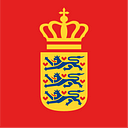Copenhagen Food: A Tasty Tour of the Danish Capital’s Culinary Delights
A new cookbook revealing the hidden gems of Copenhagen cuisine is set to take American readers by storm later this month as Trine Hahnemann’s Copenhagen Food arrives in bookstores across the country.
The Danish chef and food entrepreneur’s latest work is a sprawling exploration of her hometown and the hyggelig cafés and restaurants that make it a unique standout in the global gastronomic map. Chapters covering eight boroughs, including Nyhavn & Gammelholm, Frederiksstaden, Christianshavn, Central Copenhagen, Vesterbro & Frederiksberg, Nørrebro, and Østerbro, and also Outside Copenhagen, are paired with over 70 local and traditional recipes and Trine’s own personal stories of living in and rediscovering each neighbourhood.
#DenmarkInNY met up with Trine Hahnemann to discuss her view on how Copenhagen food culture stands out from the rest of New Nordic cuisine and what the sophisticated New York palate can learn from Copenhagen’s food culture.
DKNY: Can you tell me a little bit about yourself and how you became inspired to produce a cookbook about Copenhagen food culture?
TH: I am native to Copenhagen and I have lived here all my life (a part from a few years in New York and London). I have worked in food for more than 25 years and I thought that now that Copenhagen has become a recognized gastronomic destination I would really like to write about the everyday food culture and how Copenhagen forms part of my history. I also wanted to go back to the roots and tell about where we are coming from.
DKNY: Is there something special that characterises Copenhagen food culture and distinguishes it from the rest of New Nordic cuisine?
TH: Yes, the ‘smørrebrød’ (open sandwiches). The bread culture — especially rye bread. And, of course, all the soft sweet buns we eat where the most iconic Danish is “kanelkringle.” Then the most diffuse traditional fast food is the hotdog, which comes in traditional, modern and organic versions.
DKNY: New Nordic cuisine has built a broad fan base over the past few years but it is now a known entity. Can Copenhagen food culture help maintain New Nordic’s popularity?
TH: Copenhagen is at the epicentre [of New Nordic cuisine] and at the same time finding its own identity away from New Nordic. Restaurants with food from around the world are opening here and I think seasonal, terroir and traditional and cutting-edge sustainable solutions are the future of Copenhagen restaurants.
DKNY: New York is a very diverse city when it comes to food. Is there something that New Yorkers learn from Copenhagen’s food culture?
TH: I would say the culture around eating out is relaxed. Hygge is important in sharing a meal. The other unique aspect is the local produce and the diversity of the seasons. We have more like 12 seasons instead of four, in part because many things only grow here for a very short time. Moreover, restaurants work directly with producers. We are close to the country and distances are short therefore local collaborations are easier.
DKNY: What is a staple of Copenhagen food culture that New Yorkers absolutely need to discover?
TH: The smørrebrød and trying out the lunch culture of having smørrebrød, beer and snaps at some of the classic lunch restaurants thereby trying the whole flow of a Danish lunch. The other thing is bicycling around and trying the different street food markets.
